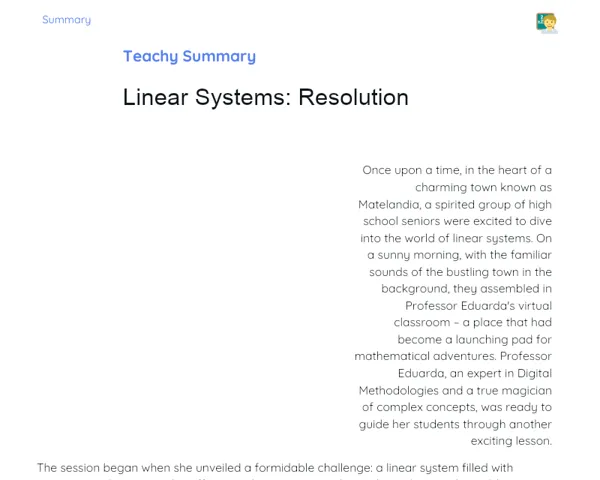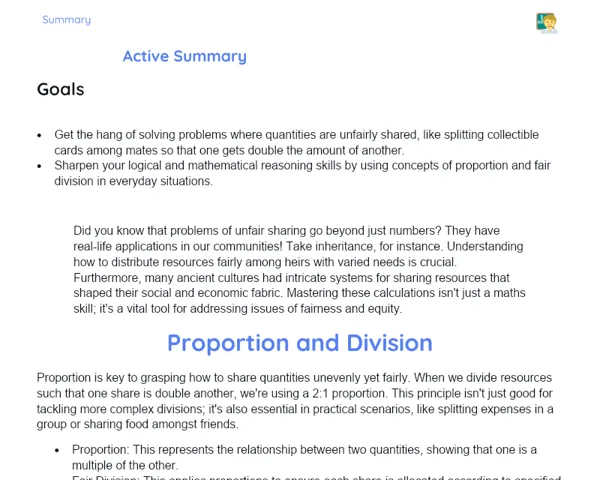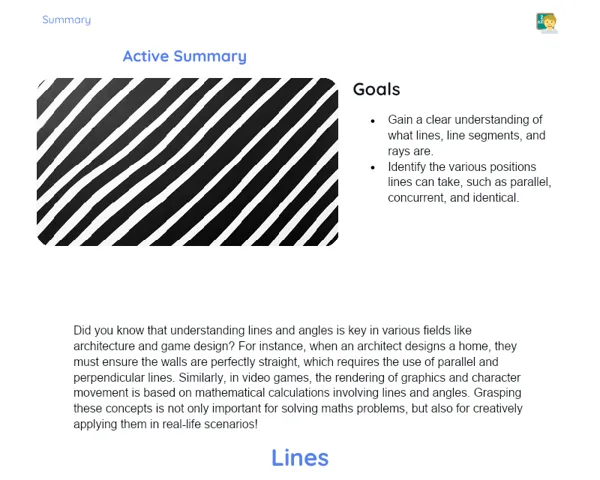Summary Tradisional | Analytic Geometry: Equation of the Circle
Contextualization
Analytic Geometry is a fascinating area of mathematics that blends algebra and geometry to tackle geometric challenges through equations. A key focus in this field is the representation of circles within the Cartesian plane. We define a circle as the collection of all points in a plane that remain a constant distance—referred to as the radius—from a central point. The equation that outlines a circle serves as an effective tool for analyzing and addressing problems related to these shapes.
The circle is expressed with the equation (x - h)² + (y - k)² = r², where (h, k) marks the centre of the circle and r indicates the radius. This format allows for straightforward identification of both the centre and radius from a given equation. Furthermore, the circle's equation has practical applications across various sectors, such as physics, engineering, and technology, aiding in the design of gears, GPS systems, and the study of circular motions.
To Remember!
Standard Equation of the Circle
The standard equation of a circle is expressed as (x - h)² + (y - k)² = r². In this equation, (h, k) denotes the centre of the circle, while r signifies the radius. This representation arises from the principle that all points (x, y) on the circle are maintained at a constant distance r from the centre point (h, k). It acts as a powerful tool for defining both the shape and position of a circle in the Cartesian plane.
Importantly, the standard form of the circle's equation enables immediate recognition of the centre and radius. For example, in the equation (x - 3)² + (y + 2)² = 25, it’s clear that the centre is (3, -2) and the radius is the square root of 25, which comes to 5. This greatly enhances our efficiency in solving geometric problems.
The circle's equation is also instrumental in examining the properties and characteristics of circles across different scenarios. The standard format is particularly advantageous when needing to alter or manipulate equations to resolve complex geometric situations.
-
Standard equation: (x - h)² + (y - k)² = r².
-
Centre of the circle: (h, k).
-
Radius of the circle: r.
Identifying the Centre and Radius
Recognising the centre and radius of a circle from its equation is an essential skill in analytic geometry. The standard equation (x - h)² + (y - k)² = r² directly provides these values. The centre is represented by the coordinates (h, k), while the radius corresponds to the square root of r². Mastery of this identification is crucial for tackling both theoretical and practical circle-related problems.
For example, take the equation (x + 4)² + (y - 7)² = 49. Here, we find that the centre is (-4, 7) and the radius is 7, since √49 = 7. Being able to swiftly and accurately extract this information empowers students to navigate a variety of problems, from finding intersections to analysing circular movements.
This expertise finds relevance in several fields, such as physics and engineering. For instance, in gear design, understanding the centre and radius of the involved circles is vital for ensuring that the gears operate correctly and efficiently.
-
Centre of the circle: (h, k).
-
Radius of the circle: r.
-
Practical example: (x + 4)² + (y - 7)² = 49 -> centre (-4, 7) and radius 7.
Transforming Equations
Transforming an expanded equation of a circle into standard form requires a method known as completing the square. This process is essential for reformatting equations that may not start in standard form, enabling easy identification of the centre and radius. Completing the square is an algebraic approach that alters the equation to highlight it in the standard format (x - h)² + (y - k)² = r².
For instance, consider the equation x² + y² - 6x + 8y + 9 = 0. To change it, we first rearrange the terms: x² - 6x + y² + 8y = -9. We then complete the square for both x and y variables: (x² - 6x + 9) + (y² + 8y + 16) = -9 + 9 + 16, yielding (x - 3)² + (y + 4)² = 16. In this manner, we determine that the centre is (3, -4) and the radius is 4.
This technique is beneficial not just for circles but also for solving an array of mathematical challenges, such as simplifying quadratic equations and analysing functions.
-
Completing the square: technique for transforming equations.
-
Transform x² + y² - 6x + 8y + 9 = 0 into (x - 3)² + (y + 4)² = 16.
-
Centre: (3, -4), Radius: 4.
Practical Applications
The circle equation boasts numerous practical applications across a range of fields. In physics, for example, it plays a key role in depicting circular motion, with the path of a moving object being modelled as a circle. A solid understanding of the equation enables predictions and analyses of behaviours in physical systems.
In engineering, particularly in the crafting of gears and wheels, the equation of the circle is fundamental for guaranteeing precise and effective functionality of the components. Knowing the centre and radius of involved circles is crucial for the adept design of mechanical parts.
Additionally, in technology and navigation systems like GPS, the equation of the circle helps ascertain precise locations on Earth. This principle is vital for the accuracy of global positioning systems, which hinge on meticulous calculations involving circles.
-
Physics: circular motion.
-
Engineering: design of gears and wheels.
-
Technology: GPS systems.
Key Terms
-
Analytic Geometry
-
Equation of the Circle
-
Centre of the Circle
-
Radius of the Circle
-
Completing the Square
-
Cartesian Coordinate Systems
-
Circular Motion
-
Gear Design
-
GPS
Important Conclusions
This lesson focused on the equation of the circle, highlighting its standard form (x - h)² + (y - k)² = r² and how it aids in identifying the centre and radius. Grasping this equation is vital for addressing geometric issues on the Cartesian plane and has various practical uses across physics, engineering, and technology.
The ability to convert expanded equations into standard form using the completing the square technique is an essential skill. This method allows for reorganising equations to better identify the centre and radius, making it applicable in several mathematical and practical settings, including mechanical component design and GPS navigation systems.
The significance of understanding the circle's equation extends beyond theory, equipping students to solve real-world challenges effectively. Students are encouraged to delve deeper into this topic, expanding their understanding and recognising the application of these concepts in different fields.
Study Tips
-
Review examples that demonstrate the transformation of expanded equations to standard form using the completing the square technique.
-
Practice additional problems involving the identification of the centre and radius from various circle equations.
-
Investigate the practical applications of circle equations in fields such as physics and engineering to appreciate their relevance and benefits.



